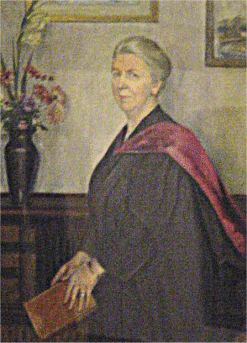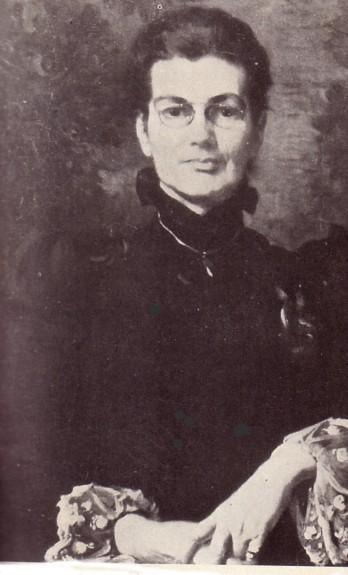| |
Unexplained Mysteries - Moberly–Jourdain Incident |
|
Source : http://en.wikipedia.org/wiki/Moberly%E2%80%93Jourdain_incident
 |
|
The Moberly–Jourdain incident, or the Ghosts of Petit Trianon or Versailles was an event that occurred on 10 August 1901 in the gardens of the Petit Trianon, involving two female academics, Charlotte Anne Moberly (1846–1937) and Eleanor Jourdain (1863–1924). The women were both from educated backgrounds; Moberly's father was a teacher and a bishop, and Jourdain's father was a vicar. During a trip to Versailles, they visited the Petit Trianon, a small chateau in the grounds of the Palace of Versailles, where they allegedly experienced a time slip, and saw Marie Antoinette as well as other people of the same period. After researching the history of the palace, and comparing notes of their experience, they published their work pseudonymously in a book entitled An Adventure, under the names of Elizabeth Morison and Frances Lamont, in 1911. Their story caused a sensation, and was subject to much ridicule.
Background
Moberly, born in 1846, was the tenth of fifteen children. She came from a professional background; her father, George Moberly, was the headmaster of Winchester College and later Bishop of Salisbury. In 1886 Moberly became the first Principal of a hall of residence for young women, St. Hugh's College in Oxford. It became apparent that Moberly needed someone to help run the college, and Jourdain was asked to become Moberly's assistant.

Jourdain, born in 1863, was the eldest of ten children[6] and her father, The Reverend Francis Jourdain, was the vicar of Ashbourne in Derbyshire. She was the sister of art historian Margaret Jourdain and mathematician Philip Jourdain. She went to school in Manchester, unlike most girls of the time who were educated at home. Jourdain was also the author of several textbooks, ran a school of her own, and after the incident became the vice-Principal of St. Hugh's College. Before Jourdain was appointed, it was decided that the two women should get to know one another better; Jourdain owned an apartment in Paris where she tutored English children, and so Moberly went to stay with her.
The incident
As part of several trips, they decided to visit the Palace of Versailles, as they were both unfamiliar with it. On 10 August 1901, they travelled by train to Versailles. They did not think much of the palace after touring it, so they decided to walk through the gardens to the Petit Trianon. On the way, they reached the Grand Trianon and found it was closed to the public. They travelled with a Baedeker guidebook, but the two women soon became lost after missing the turn for the main avenue, Allée des Deux Trianons. They passed this road, and entered a lane, where unknown to them they passed their destination.[9] Moberly noticed a woman shaking a white cloth out of a window and Jourdain noticed an old deserted farmhouse, outside of which was an old plough. At this point they claimed that a feeling of oppression and dreariness came over them. They then saw some men that looked like palace gardeners, who told them to go straight on. Moberly later described the men as "very dignified officials, dressed in long greyish green coats with small three-cornered hats."[12] Jourdain noticed a cottage with a woman and a girl in the doorway. The woman was holding out a jug to the girl. Jourdain described it as a "tableau vivant", a living picture, much like Madame Tussaud's waxworks. Moberly did not observe the cottage, but felt the atmosphere change. She wrote: "Everything suddenly looked unnatural, therefore unpleasant; even the trees seemed to become flat and lifeless, like wood worked in tapestry. There were no effects of light and shade, and no wind stirred the trees."
The Comte de Vaudreuil was later suggested as a candidate for the man with the marked face allegedly seen by Moberly and Jourdain.
They reached the edge of a wood, close to the Temple de l'Amour, and came across a man seated beside a garden kiosk, wearing a cloak and large shady hat. According to Moberly, his appearance was "most repulsive... its expression odious. His complexion was dark and rough." Jourdain noted "The man slowly turned his face, which was marked by smallpox; his complexion was very dark. The expression was evil and yet unseeing, and though I did not feel that he was looking particularly at us, I felt a repugnance to going past him. A man later described as "tall... with large dark eyes, and crisp curling black hair under a large sombrero hat" came up to them, and showed them the way to the Petit Trianon.
Portrait of Marie Antoinette by Wertmüller. The figure that Moberly saw near the Petit Trianon was claimed to bear a resemblance to the Queen as depicted in this painting
After crossing a bridge, they reached the gardens in front of the palace, and Moberly noticed a lady sketching on the grass who looked at them.] She later described what she saw in great detail: the lady was wearing a light summer dress, on her head was a shady white hat, and she had lots of fair hair. Moberly thought she was a tourist at first, but the dress appeared to be old-fashioned. Moberly came to believe that the lady was Marie Antoinette. Jourdain however did not see the lady.
After this, they were directed round to the entrance and joined a party of other visitors. After touring the house, they had tea at the Hotel des Reservoirs before returning to Jourdain's apartment.
Aftermath
After leaving Versailles, neither Jourdain nor Moberly mentioned the incident to one another until a week later. Moberly wrote a letter about the trip to her sister, and when she got to the afternoon of the Versailles incident she asked Jourdain if she thought the Petit Trianon was haunted. Jourdain told her that she thought it was. Three months later in Oxford[20] they compared their notes, and decided to write separate accounts of what happened, and research the history of the Trianon. In doing so, they found that on 10 August 1792, the Tuileries palace in Paris was besieged, the king's Swiss guards were massacred, and the monarchy itself was abolished six weeks later.
They visited the Trianon gardens again on several occasions, but were unable to trace the path they took. Various landmarks such as the kiosk and the bridge were missing, and the grounds were full of people. Trying to come up with an explanation, they wondered if they had stumbled across a private party, or an event booked that day. However they found that nothing had been booked that afternoon. During their research, they thought they recognised the man by the kiosk as the Comte de Vaudreuil, a friend of Marie Antoinette, who herself had been thought to have been seen by Moberly.
Convinced that the grounds were haunted, they decided to publish their findings in a book An Adventure (1911), under the pseudonyms of Elizabeth Morison and Frances Lamont. The book, containing the claim that Marie Antoinette had been encountered in 1901, caused a sensation. However, many critics did not take it seriously on the grounds of the implausibilities and inconsistencies that it was thought to contain. A review of the book in the Proceedings of the Society for Psychical Research suggested that the women had misinterpreted normal events that they had experienced.[n 1] In 1903, an old map of the Trianon gardens was found and showed a bridge that the two women had claimed to have crossed that had not been on any other map.] The identity of the authors of An Adventure was not made public until 1931.
Both women are reported to have had many paranormal experiences before and after their adventure. In one of them Moberly claimed to have seen in the Louvre in 1914 an apparition of the Roman emperor Constantine, a man of unusual height wearing a gold crown and a toga; he was not observed by anybody else. During the First World War Jourdain, the dominant personality of the pair and who had succeeded as Principal of St. Hugh's, became convinced that a German spy was hiding in the college. After developing increasingly autocratic behaviour, she died suddenly in 1924 in the middle of an academic scandal over her leadership of the college, her conduct having provoked mass resignations of academic staff. Moberly died in 1937.
The story of the adventure was made into a TV movie, Miss Morison's Ghosts, in 1981.[26] The incident is said to have exerted an influence on J. R. R. Tolkien's views and work.
Some explanations
In addition to the explanation by the women that they had been caught up in what is now called a time slip and had observed ghosts from the past, a non-supernatural explanation of the events was proposed by Philippe Jullian in his 1965 biography of the aristocratic decadent French poet Robert de Montesquiou. At the time of Moberly and Jourdain's excursion to Versailles Montesquiou lived nearby and reportedly gave parties in the grounds where his friends dressed in period costume and performed tableaux vivants as part of the party entertainments. Moberly and Jourdain may have inadvertently stumbled into a rehearsal for one of these performances. The Marie-Antoinette figure could have been a society lady or a cross-dresser, the pockmarked man Montesquiou himself. It was suggested[28] that a gathering of the French decadent avant-garde of the time could have made a sinister impression on the two middle-class Edwardian spinsters who would have been little used to such company.
In a review of the history of the Moberly-Jourdain adventure and the extensive public reaction to it Terry Castle noted with skepticism the claim that a shared delusion may have arisen out of a lesbian folie à deux between the two women. Castle concludes that, when all proposed explanations have been considered, a core of mystery remains as much in relation to the psychological dynamics of the pair as to any aspects of the paranormal associated with their story.
Without fully endorsing the de Montesquiou explanation, Michael Coleman[ carefully examined the story, and in particular the two published versions of the ladies' accounts (the earlier-written of which, from November 1901, had only previously been published in the second, small print-run, edition of An Adventure in 1913), and concluded that the more widely-available texts, as published in the 1911 and later editions, had been considerably embroidered well after the events described and after the ladies had begun their investigations, while the original accounts had little or nothing to suggest a supernatural experience. He also questioned the rigour and reliability of the ladies' subsequent researches, pointing out that few, if any, of their informants are named and that most of their literary and historical references were taken from unreliable sources.

Submit News/Videos/Links |
Discuss article |
Article Link
|
More unsolved mysteries on Unexplained Mysteries
|



![]()